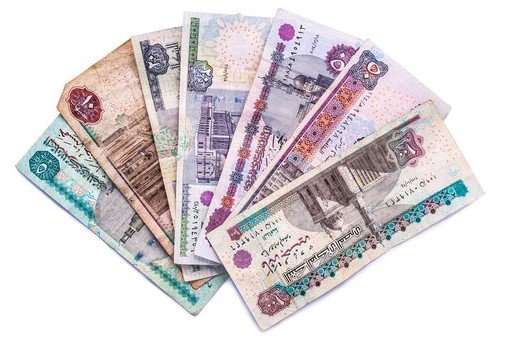The Egyptian pound has surged to its strongest level in 16 months against the US dollar, driven by strong foreign currency inflows from investments, tourism, and record-breaking remittances from workers abroad. This rise happened during Monday’s trading session on November 3, 2025, with the pound reaching about 47.19 for buying and 47.29 for selling per dollar, marking a key turnaround for Egypt’s economy after recent challenges.
Key Drivers Behind the Pound’s Strength
Foreign inflows have played a big role in boosting the pound. Portfolio investments in local treasury bills and bonds have increased, bringing in fresh dollars. Tourism revenues have also rebounded, with more visitors coming to Egypt’s historic sites and beaches. These factors have helped build up foreign reserves and stabilize the currency.
Remittances from Egyptians living overseas hit a record high of 36.5 billion dollars in the fiscal year 2024/25, up 66 percent from the previous year. This surge comes from economic reforms started in March 2024, which made it easier for people to send money home through official channels. Experts say these inflows are vital, as they provide a steady source of foreign currency without adding to debt.

The Central Bank of Egypt reported that net foreign assets in the banking system rose to 20.78 billion dollars in September 2025, a 16 percent jump from August. This improvement shows how banks are holding more foreign deposits, ready to cover needs like imports or debt payments.
Current Exchange Rates and Market Trends
Traders watched the pound closely as it gained ground against major currencies. The dollar’s rate settled lower, reflecting Egypt’s improved external position. Other currencies followed similar patterns, with the euro and British pound also weakening against the Egyptian currency.
Here is a snapshot of key exchange rates from the latest trading session:
| Currency | Buy Rate (EGP) | Sell Rate (EGP) |
|---|---|---|
| US Dollar | 47.16 | 47.30 |
| Euro | 54.40 | 54.57 |
| Pound Sterling | 61.99 | 62.19 |
| Canadian Dollar | 33.66 | 33.76 |
| Swiss Franc | 58.60 | 58.81 |
| Japanese Yen (100) | 30.62 | 30.71 |
| Saudi Riyal | 12.57 | 12.61 |
These rates highlight the pound’s broad strength, which has been building over the past three months. Market analysts point to reduced volatility, thanks to timely inflows that offset earlier drops in August.
This trend ties into broader economic shifts, including Egypt’s push for 42 billion dollars in foreign direct investment this fiscal year. Such investments focus on sectors like energy and infrastructure, further supporting currency stability.
Economic Impact on Everyday Egyptians
The stronger pound means lower costs for imported goods, which could ease inflation for families. Food items, electronics, and fuel might see price drops, helping households stretch their budgets further. Businesses that rely on imports also benefit, as their expenses decrease, allowing them to invest more in growth.
However, not everyone feels the gains equally. Some exporters worry that a stronger pound makes Egyptian products pricier abroad, potentially hurting sales in key markets like Europe and the Middle East. The government is watching this balance to ensure the currency boost supports overall growth without sidelining export-driven jobs.
Recent data shows Egypt’s current account deficit narrowed sharply in early 2025, from 7.5 billion dollars to 2.1 billion dollars year-over-year. This improvement stems from higher remittances and tourism, which together brought in over 30 billion dollars last year. Families receiving remittances often use the money for education, housing, and small businesses, creating a ripple effect in local communities.
Challenges and Risks Ahead
Despite the positive momentum, Egypt faces hurdles. Global events, like rising interest rates in the US, could pull investments away. Debt servicing remains a concern, with external debt climbing to 161.2 billion dollars by June 2025. Officials are working on reforms to manage this, including diversifying revenue sources beyond remittances.
Timing issues in inflows caused a brief dip in net foreign assets in August, but the quick recovery shows resilience. Experts warn that sustaining this requires ongoing reforms, such as improving banking efficiency and reducing red tape for investors.
- Political stability in the region could attract more tourism dollars.
- Continued high remittances depend on job markets in Gulf countries and Europe staying strong.
- Energy sector deals, like recent natural gas projects, might bring in billions more in foreign investment.
Future Outlook for Egypt’s Economy
Looking ahead, forecasts suggest the pound could hold its gains into 2026 if inflows keep up. Analysts predict remittances might reach 40 billion dollars annually, driven by digital transfer tools that make sending money faster and cheaper. The government aims to build on this by targeting tech and renewable energy investments.
Egypt’s economy grew by about 4 percent in 2025, supported by these currency trends. This growth could create jobs and reduce poverty, but it needs careful policy moves to avoid overheating. International partners, including the IMF, have praised recent steps, which include floating the currency more freely.
In summary, the pound’s rise offers hope for stability, but long-term success hinges on balanced growth strategies.
What do you think about Egypt’s economic turnaround? Share your thoughts in the comments below and pass this article along to friends interested in global finance.
